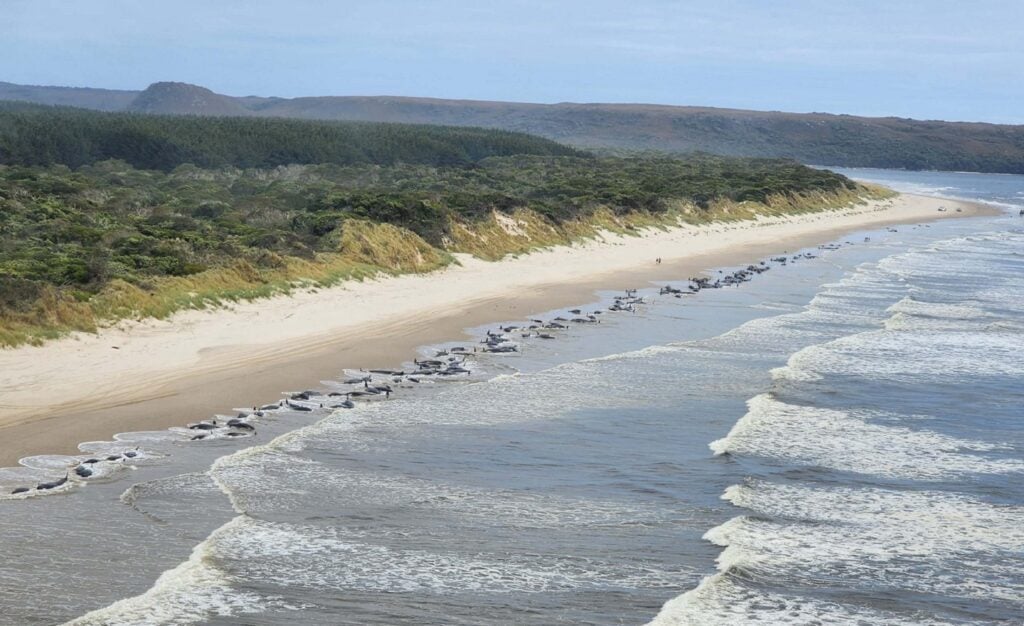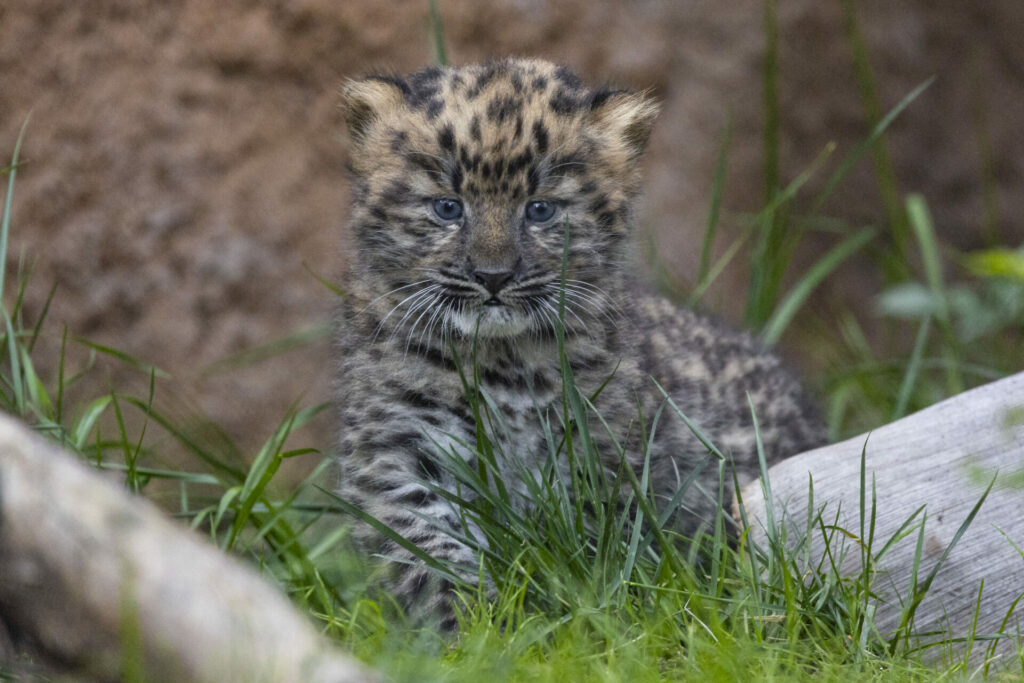A recent fatal attack on a human by two polar bears is linked to the climate crisis say scientists.
The incident occurred on August 7th on Brevoort Island, the site of a North American air-defense radar station in Canadian territory. Nasittuq, the company operating the facility, confirmed that employees killed one of the bears involved in the attack.
Scientists say the event underscores how changes in sea ice have disrupted the Arctic predator’s search for food.
Despite an estimated 17,000 polar bears in Canada, fatal encounters with humans are rare but experts warn that as climate change continues to adversely impact the habitat and food sources of polar bears, such clashes could become more frequent.
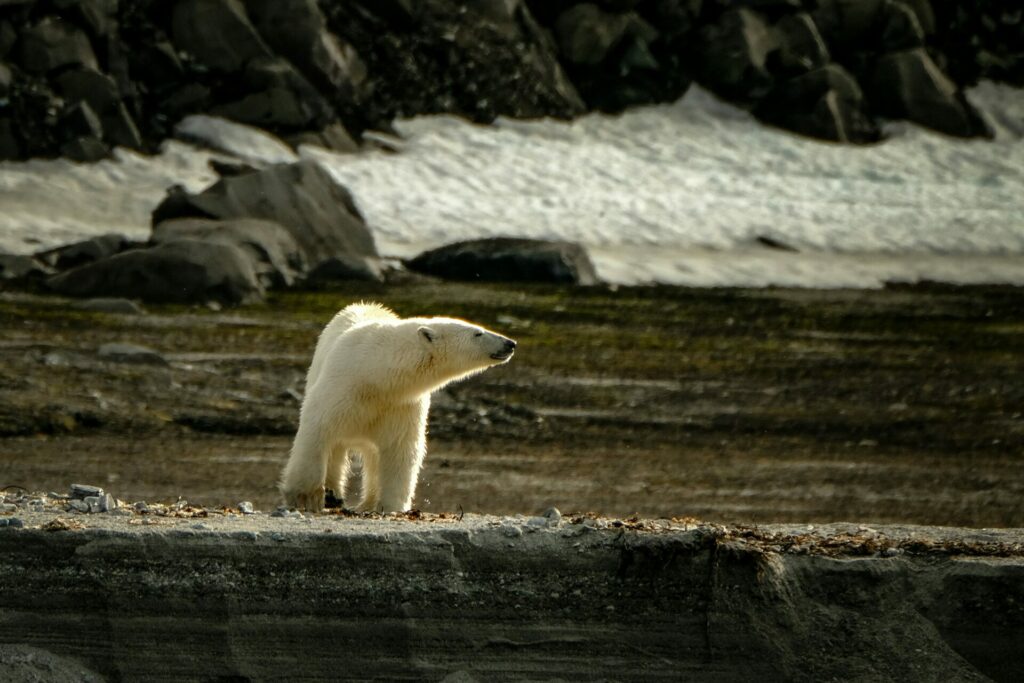
The animals are more likely to attack a person when they are ‘nutritionally stressed’ and in ‘below-average body condition,’ according to a study published in the Wildlife Society Bulletin.
The report’s authors also found that 61 per cent of bears that attacked humans were in below-average body condition.
Andrew Derocher, a professor of biology at the University of Alberta, said: ‘The reality is, polar bears are unpredictable at the best of times. And with all of the environmental changes we’re seeing, they’re going to become more unpredictable.’
The decrease in ice cover, caused by global warming, has an extremely detrimental effect on the food stocks for polar bears, because the frozen Arctic seas are key to their survival. The animals use the sea ice as a platform to hunt ringed seals, which have high concentrations of fat, mostly in late spring and early summer.
But during the warmer months many parts of the Arctic are now increasingly ice-free and relocation in seal populations puts immense pressure on bears to find enough food.
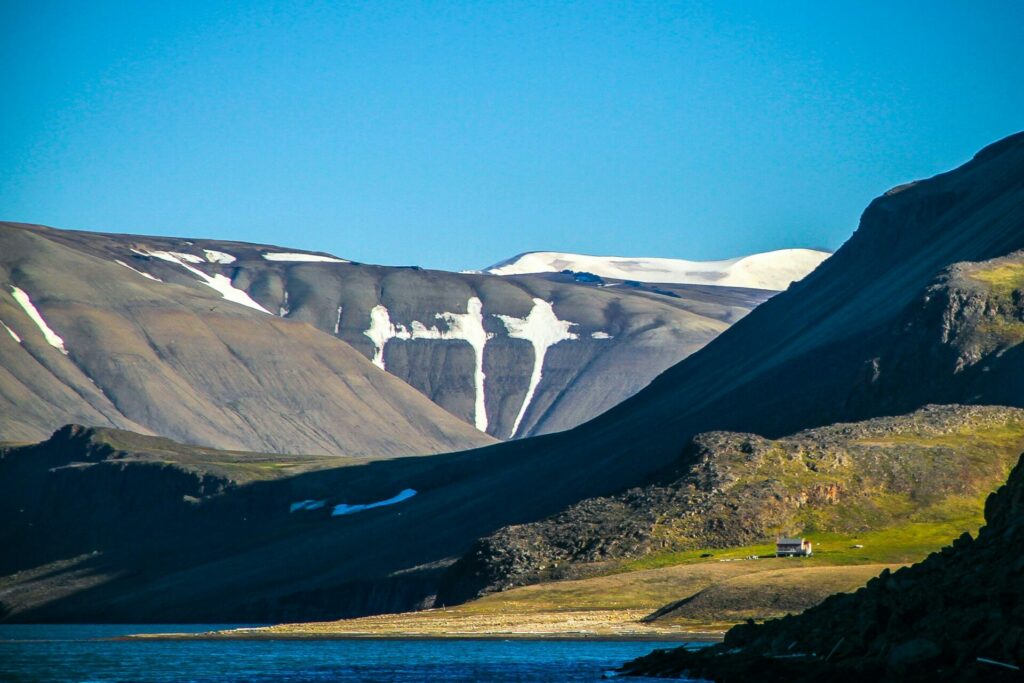
In Western Manitoba a study found the ocean’s ice-free period has increased by three weeks between 1979 and 2015.
Polar Bear Research
To understand how the animals survive as the ice disappears, researchers followed the activities of 20 polar bears during the summer months over a three-year period in Manitoba, Canada.
As well as taking blood samples, and weighing the bears, the animals were fitted with GPS-equipped video camera collars.
This allowed the scientists to record their movements, their activities and what they ate.
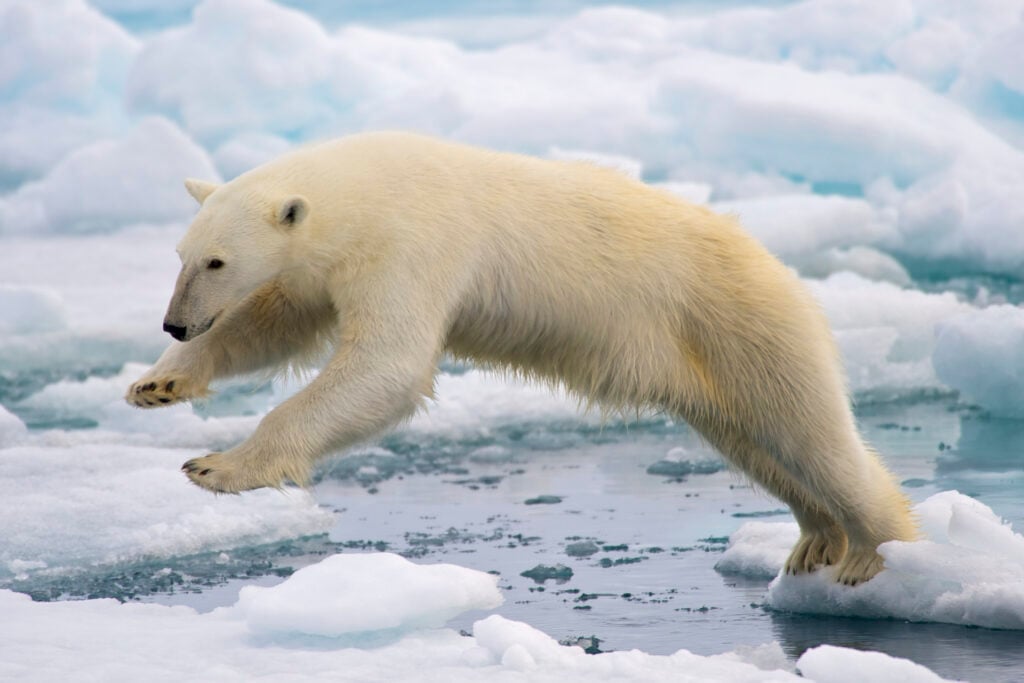
In the ice-free summer months, the bears adopted different strategies to survive, with some essentially resting and conserving their energy, while others tried to forage for vegetation or berries or swam to see if they could find any other food sources. This is where they could come into increased contact with human populations.
Both approaches failed, with 19 of the 20 bears in the study losing weight, by up to 11 per cent, and in some cases, some even lost a kilogram per day in body mass.
‘Back in the 1980s, polar bears would look like giant, fat sausages lying on the beach in the summer. But now, we’re seeing a population that is much leaner overall’
Andrea Derocher, biology professor at the University of Alberta in Canada
Andrew Derocher, a biology professor at the University of Alberta in Canada, who has studied the animals for almost 40 years, said: ‘Back in the 1980s, polar bears would look like giant, fat sausages lying on the beach in the summer. But now, we’re seeing a population that is much leaner overall. And I suspect as food becomes more of a challenge, they’ll start entering (human) communities.
‘Are those communities ready? Absolutely not. A handful have small polar bear patrol programmes, but most have nothing. Given the rarity of sightings, it’s understandable. It’s hard to have a crew of polar bear people on standby for a couple bears a year coming through at unpredictable times.’
Instead of human-bear safety initiatives the scientist claimed locals were more focused on hunting the bears, which is a lucrative source of income due to their pelts and legal with the use of dog sled teams.
He explained: ‘While people focus on the hunt, I’m hearing more and more from communities saying: “We’ve got open garbage pits here that are attracting polar bears into their towns. We need help with our garbage. We have polar bears coming into our communities in the middle of winter and in the middle of the summer. We need help.”’
Bear Tracking
One solution could be tracking devices that stick in polar bears’ fur which could be the key to protecting both people and bears – by closely monitoring the animals’ locations.
The tracking tags, which have been tested on bears in Canadian Arctic, could help prevent those encounters, by ‘keeping a remote eye’ on the bears.
Lead researcher Tyler Ross, a PhD candidate from York University in Toronto, said the fur tags were ‘particularly promising’ for the prevention of ‘human-bear interactions’.
In communities in the southern Canadian Arctic, where the scientists tested the devices, polar bears that wander too close to a community are caught, transported and released in carefully selected sites away from towns and villages.
‘These tags could be fitted to those bears to monitor where they are after they’ve been released,’ explained Ross. ‘If they’re coming back towards the community, conservation staff would have a sense of where they are, and they could head them off. I think that’s where they offer considerable promise.’
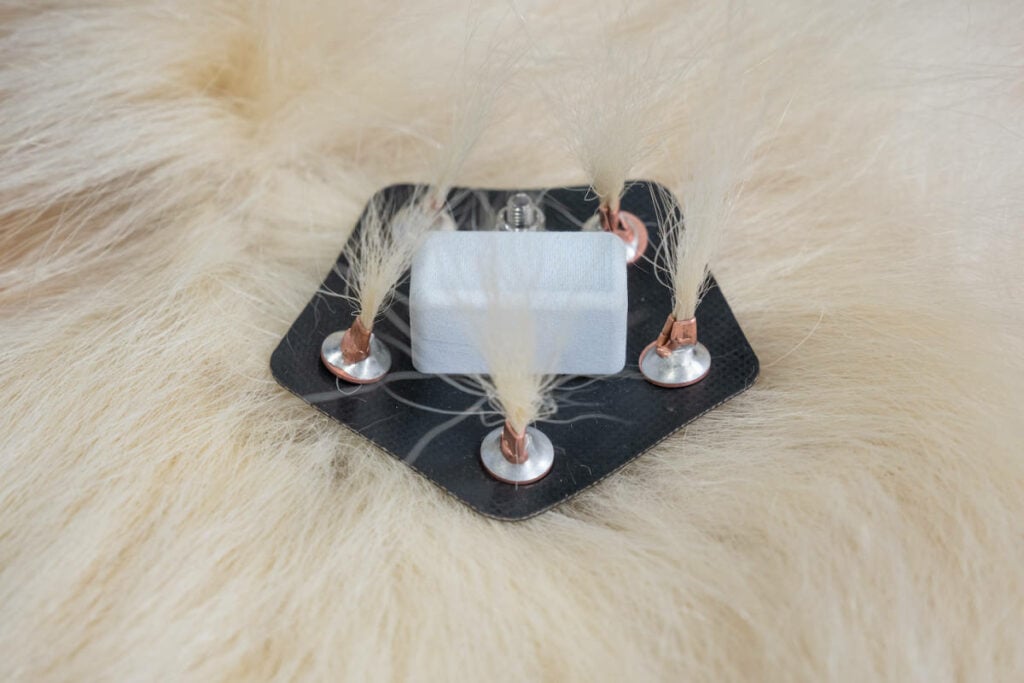
The tags the researchers tested were designed by the company 3M in collaboration with the charity Polar Bears International. They all attach to the bears’ coarse fur and to fit the tags, scientists had to locate and sedate bears.
The best performing device was called a SeaTrkr tag, which stayed attached for an average of 58 days and – with an in-built GPS system – allowed the scientists to pinpoint the bears’ location to within just a few metres.
‘It’s ideal to have something that falls off naturally – that’s not permanently attached to the bear,’ explained Ross. ‘But anything that lasts in the order of a few months, then you’re getting (readings from) these important seasons that the bears are going through throughout the year.’
Polar bear attacks on humans are rare, but last year, a polar bear killed a woman and her son in western Alaska near a school in Wales, a remote village on the edge of the Seward Peninsula.
The Wildlife Society Bulletin reported that from 1870 to 2014, there were 73 confirmed polar bear attacks in five countries with territory adjacent to the Arctic Ocean – the US, Canada, Russia, Norway and Denmark, which includes Greenland. Those attacks resulted in 20 deaths.
Polar bears are considered threatened under the US Endangered Species Act because of climate change melting sea ice.






